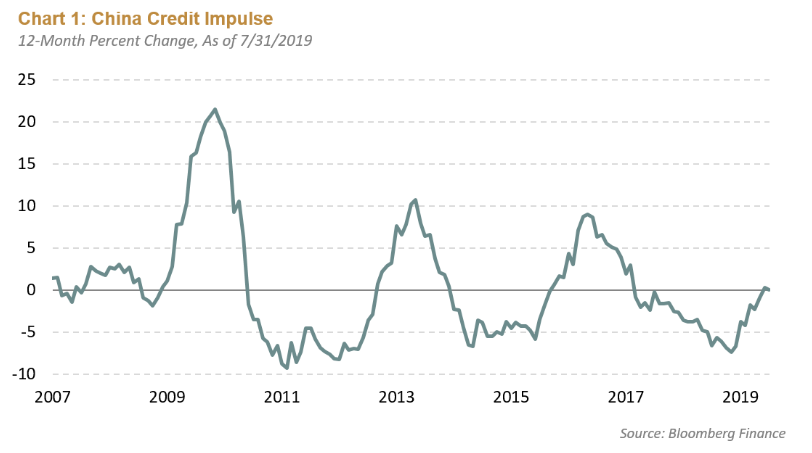Sponsored Content
By Tracy Chen, Portfolio Manager and Head of Structured Credit, Brandywine Global
The strong rally of U.S. Treasury bonds and European sovereign debt abruptly paused on August 16, upon news of potential plans for German fiscal stimulus and U.S. Treasury issuance of 50- to 100-year bonds. Of the two, the future direction of Treasury yields will be a function of global growth, with China as a significant driver, and the progress of the trade talks, although the path of Federal Reserve (Fed) rate cuts and market supply and demand technicals are also important variables. The rally in safe-haven bonds could end as a result of the continued stimulus that China is levelling, and if U.S.-China trade tensions come to an end. Should these events occur, then risk-seeking investor behaviour should resurface and direct investments away from safe-haven assets.
So are we out of the woods on China’s growth slowdown and the ongoing trade war? In order to answer these two questions, let’s assess the recent trade negotiations and look at some of China’s recent growth indicators, the banking sector and new measures for additional easing.
Trade
The power dynamics have changed since President Trump delayed the September 10% tariff on over half of the $300 billion imports from China. Although the U.S. decision to extended Huawei’s licenses for another 90 days was briefly a constructive sign, the trade war has escalated over the last week. China has continued to take counter-measures:
- Increasing its tariffs on $75 billion of U.S. imports starting in September.
- Resuming the 25% tariff on U.S. autos/parts imports on December 15—a decision that was previously shelved in 2018.
- Abstaining from discussing Hong Kong matters.
The U.S. has also continued to respond, with President Trump quickly asserting that:
- The U.S. will raise the 25% existing tariff on $250 billion Chinese imports to 30% starting October 1; we find it significant that 25% is no longer the upper limit for tariffs.
- The proposed 10% tariff on $300 billion of goods will be raised to 15% in two batches on September 1 and December 15.
- American companies should immediately start looking for an alternative to China. On Twitter, Trump has mentioned the International Emergency Economic Powers Act of 1977 (IEEPA) and may potentially use the presidential power granted by the IEEPA to sanction a country by banning transactions in foreign exchanges, bank transfers of credit, or payments.
Furthermore, we will be closely watching to see whether:
- The extension of the Huawei licenses is simply a tactic to give U.S. firms more time to find alternative buyers while Huawei and 118 of its affiliated businesses will be added to the export blacklist.
- Trump goes through with the planned $8 billion fighter jet sale to Taiwan, which China has vowed to countermeasure by perhaps sanctioning U.S. firms that sell jets or arms to Taiwan.
- China expands the Unreliable Entity List, restricts Chinese tourism and studying in the U.S., or increases cooperation with Russia, North Korea and Iran.
A year ago, the market firmly believed that the U.S. could win this trade war. However, some of these remaining risks could make this negotiation more complex and even harder to reach a deal. For example, markets did not expect this round of escalation during the G7 summit weekend and pricing in this type of uncertainty will be extremely difficult and volatile. With China buying more time and Trump’s re-election clock ticking, the power dynamics may shift to China’s benefit as it has a longer timeframe for negotiation while enduring slower growth, higher inflation and higher unemployment—if needed.
Recent Economic Data from China
China’s July activity disappointed markets due to weak domestic demand and no immediate signs of stimulus working:
- Weak credit data were driven by softer new loan growth and continuous shadow banking shrinkage, both of which resulted from tightening property developer financing, prohibiting the use of consumption loans for home purchases, and strengthening asset management rules for shadow banking (see Chart 1).

- Producer price index data fell into negative territory, signalling the resumption of deflation and further challenges to industrial profits.
- Infrastructure investment weakened moderately despite the fact that local government special bond issuance used up 80% of the quota.
- Private investment turned weaker than public investment, as shown in Chart 2 below:

